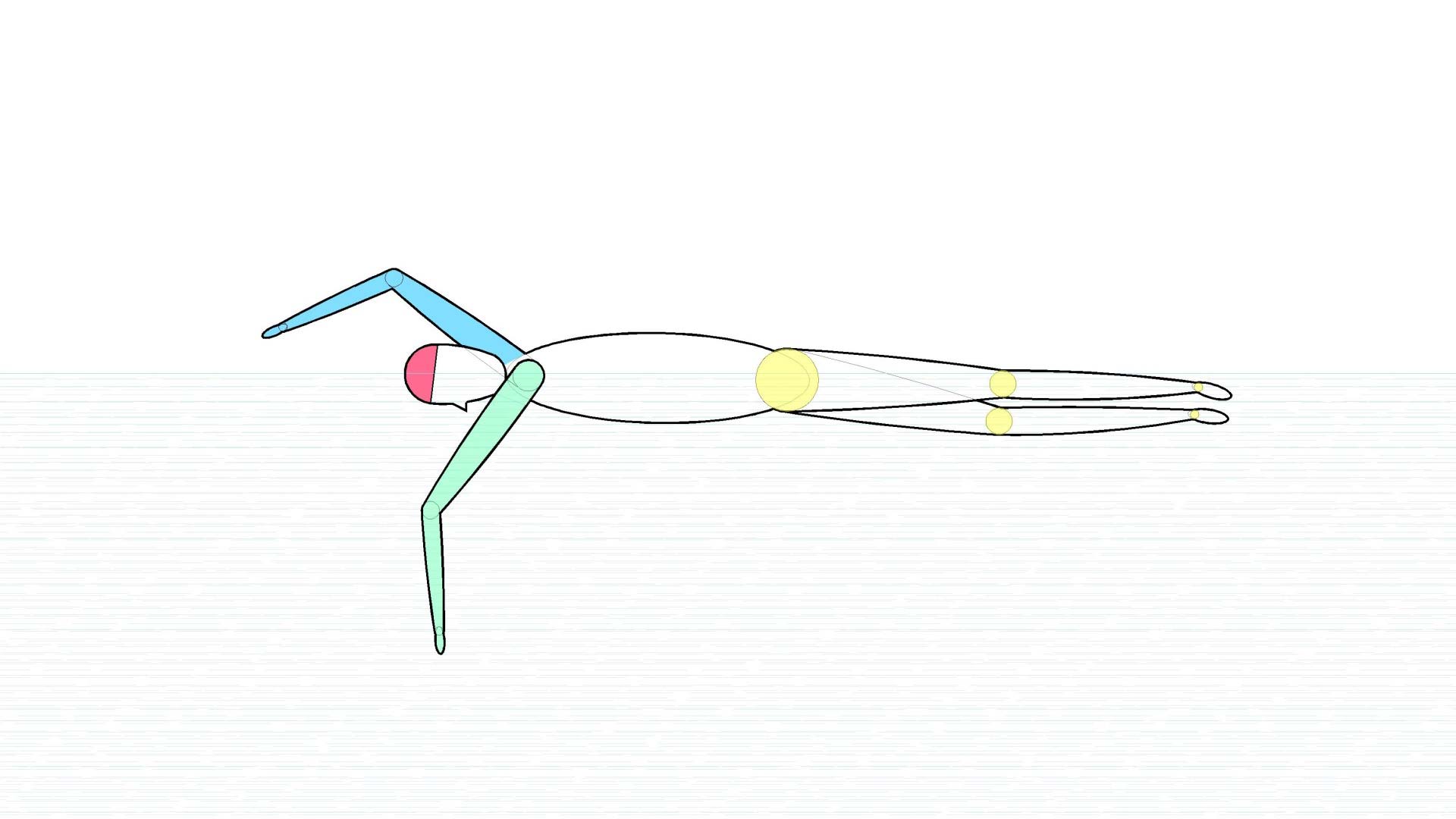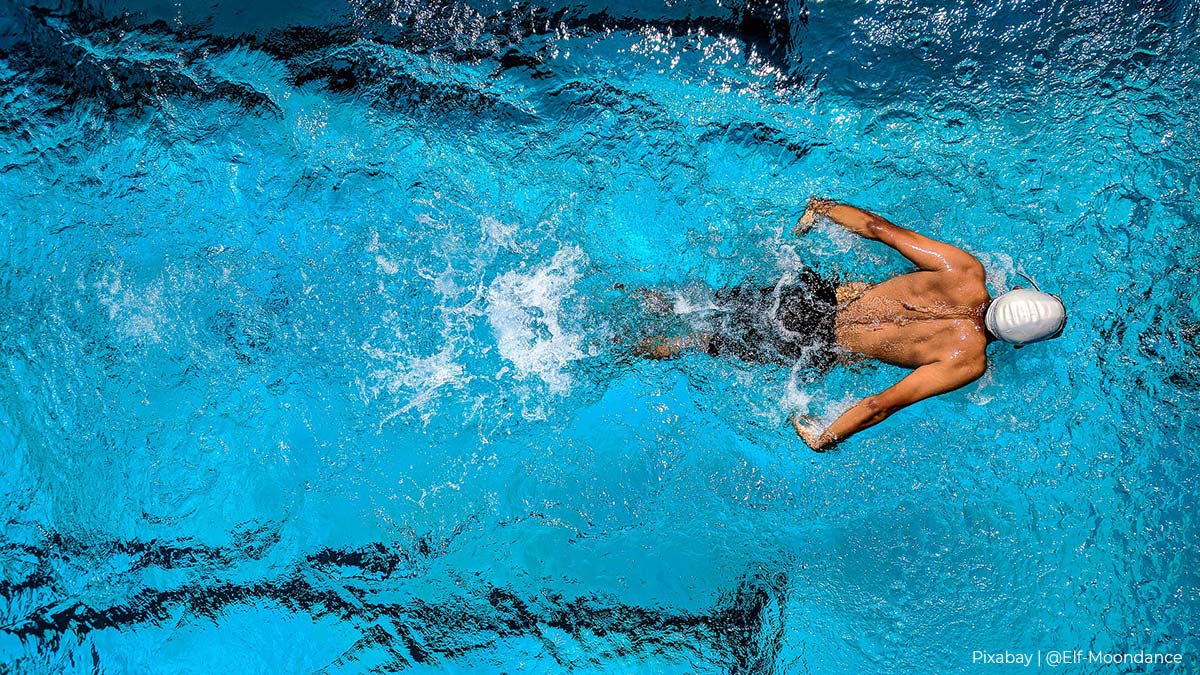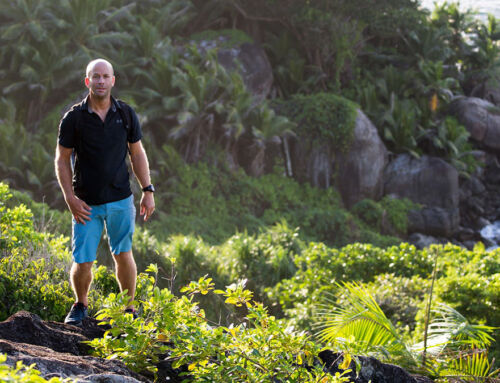We are going to analyse some basic aspects of hydrodynamics in swimming in order to establish an efficient freestyle technique. This will enable swimmers to enjoy their sport in a relaxed and effortless manner.
First of all, a fundamental aspect is the balance of the body in the water. From the point of view of hydrodynamics, the best balance corresponds to a body position that minimises viscous resistance and tangential frictional stresses arising from contact with the water. In these terms, the horizontal position is the position of equilibrium. Feet, hips and head, facing the bottom of the pool, are in perfect alignment with respect to an imaginary axis.

In the sketch, the friction stresses are shown in blue.
If the position of the swimmer is not horizontal, but the hips and legs are sunken, the viscous resistance to be overcome will be greater. In addition to the tangential frictional stresses, the swimmer will have to overcome the viscous pressures perpendicular to the contact surface.

In the picture, in blue, friction, and in red, viscous pressures.
But the human body does not have a uniform density. The torso, because it houses the lungs, enjoys considerably more buoyancy than the waist or legs. For this reason, many swimmers have sunken hips and legs, and require intense leg kicks to try to lift them. This leads to higher energy consumption.
The aim is for the swimmer’s progress through the water to create as little disturbance as possible and to glide through the water, rather than trying to push it backwards. To do this, the swimmer must always have one arm forward of the head and shoulders, in a position close to horizontal. In this way, the swimmer crosses through the fluid with as little surface area as possible, first with the hand and then with the arm. The latter remains forward (green colour in the image), during the entire recovery phase of the opposite arm (blue colour in the image). At the moment that the recovery is finished and the water entry and extension phase begins, the forward arm starts to move at the beginning of the grip phase.

In this picture, the swimmer does not keep their arm forward (green arm), so they have to overcome increased friction in the head and shoulder areas during the forward stroke.

In this picture, the swimmer does not keep their arm forward (green arm), so they have to overcome increased friction in the head and shoulder areas during the forward stroke.
The roll is the turning of the swimmer around an imaginary axis from head to toe. This turn starts from the hips, with the help of each foot stroke. The roll allows the swimmer to support their body, partially on their side, by lowering their “sleeve”, in order to reduce friction in the forward stroke.

On the right, the drawing represents the swimmer’s roll. It can be seen how the “sleeve” (red arrow) decreases with it.
An efficient roll movement will be an alternating rotation in one direction and the other, synchronised with the swing of one leg and the entry into the water and extension of the opposite arm. The rotation should be subtle, nothing more than sufficient to improve the gliding condition. Excessive rotation, in accordance with Archimedes’ thrust, will increase the sinking of the swimmer and break their balance.
By Luis Llor, Senior Hydraulic Engineer at Amusement Logic Architecture Dept.






